December means the holiday season is upon us, and for many it’s a time for revelry, feasting, and holiday shopping. More importantly though it’s a season for giving.
For a number of years now, NVIDIA Corp. has elected to forgo corporate holiday parties, and instead invests those resources back into the local community. Last year we were part of NVIDIA’s Project Inspire team that helped to renovate San José’s History Park, in Kelley Park.
This year’s volunteer event spanned two full days, and consisted of more than 1,500 NVIDIA employees, family, and friends, working side-by-side with volunteers from the community, and was coordinated again this year by members of City Year.

Project Inspire Full Circle Farm Volunteers, December 9, 2010 (Image © Pedersen Quist Photography; Used By Permission)
The project this season was especially exciting for us, as the recipient of the volunteer effort this year was Full Circle Farm in Sunnyvale.
Full Circle Farm is an 11-acre farm located right in the heart of the Bay Area, and a project of Sustainable Community Gardens.
Full Circle Farm has a unique mission, not only to provide fresh, locally grown, sustainable, and nutritious food for the community, and Santa Clara Unified School District cafeterias, but also to provide educational resources to the district’s students.
Students have access to apprenticeship, and mentoring programs, where they learn the fundamentals of sustainable agriculture, science, and nutrition. These programs provide valuable work experience, and help the students to gain important life skills in teamwork, communication, and leadership.
As growers of organic, and sustainable foods ourselves, albeit on a small scale, we’re well aware of America’s disconnect with food, and food production.
We believe that everyone should have access to nutritious, and affordable locally produced food, regardless of income, or location. The unfortunate truth is that today most affordable foods are generally nutrition poor, and calorie dense. It doesn’t have to be that way though, and Full Circle Farm is striving to make affordable healthy foods available to the local community.
Full Circle Farm’s education programs are equally as important as the food they produce. Access to locally produced food only addresses part of the food problem. As of 2008, a third of children in the United States were overweight, which in turn sets the stage for the development of a number of chronic diseases in adulthood, including diabetes, hypertension, and heart disease. [1,2,3] As such, nutrition education, especially for children, is imperative. It’s far easier to teach children about the benefits of nutritious and healthful foods before they develop unhealthy eating habits.
The goals of Project Inspire this year were to help Full Circle Farm improve their on-site food storage and packing facilities, enhance food production, and distribution within the community. In addition to helping improve the day-to-day operation of the farm, the goal was also to enhance the educational resources available on the farm, by constructing an outdoor classroom, and building a teaching kitchen for hands-on instruction in food preparation.
As part of Project Inspire this year we volunteered to work on one of the advanced construction projects, not quite sure what we’d be tasked to until the morning we arrived. Early Friday morning our team leader, Ed from City Year, directed us to an area of the farm where the new outdoor teaching kitchen was to be built.
Being both handy with a hammer and nails, and passionate about growing, and cooking food, working on a farm kitchen project seemed like a perfect fit for us!
Fruit and vegetable gardening, and cooking, go hand-in-hand, so the kitchen will provide students with a complete farm-to-table experience, by providing a place to learn how to prepare healthy and nutritious meals from the foods they’ve grown directly on the farm.
Prior to our arrival, the new kitchen area had been graded, and the main support post footers had been prepared in advance, so the volunteer crews could focus directly on kitchen construction.
While a few other teams were securing the primary support posts in the morning, our team set to work framing each of the new kitchen’s exterior walls.
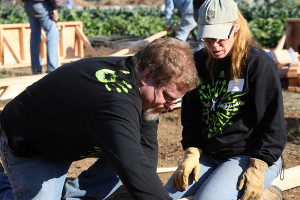
The Curbstone Valley Crew quickly set to work framing out the walls (Image © Pedersen Quist Photography; Used By Permission)
The construction was straightforward 2″x4″ framing, with the wall studs 16 inches on center.
To make construction more efficient, our team subdivided into smaller groups, and each of us set to work building wall sections.
Each section quickly came together.
Eight 8-foot wall sections, and four 12-foot wall sections with window openings, were pieced together initially by hand with hammer and nails.
However, once the power framing nailer materialized, our team rocked out the last of the remaining walls in no time! Go Team!
Our team was tremendously efficient, so much so that we had all of the walls framed shortly after lunch.
As the walls couldn’t be installed until the main support posts were secured, our team then switched over to helping the support post construction crews in the afternoon.
Installing each post was a slow and hefty undertaking, as each post needed to be secured to a support bracket by 10 enormous bolts. This slowed down construction somewhat, but accuracy in this step was critical if the walls were going to fit, so it couldn’t be rushed.
Each post was plumbed, each bolt hole bored and cleaned out, bolts installed, and then the bolt ends trimmed flush. The top of each post was also fitted with a joist bracket to support the roof joists.
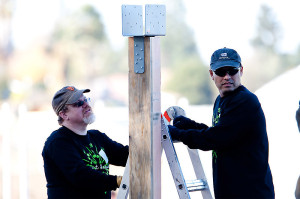
Mr. Curbstone (left) helping to install a roof joist bracket (Image © Pedersen Quist Photography; Used By Permission)
By mid-late afternoon though enough of the posts were secured that we could finally test-fit one of the wall sections our team built earlier in the day.
As the final post positions weren’t set before the walls were framed, we’d left the end framing open on one side to allow us to make final adjustments to the total wall length at the time of installation.
A slight trim, and installation of the last piece of framing…
…and then came the moment of truth…
…as the first wall section was finally hoisted into place.
It was a perfect fit!
One down, only eleven more to go!
The next step was installing the roof beam between the posts.
As you can tell from the last photo the sun was starting to set, but there was still a fair amount of construction to do. However, this was only the first day of the project, and Saturday’s crew would be able to pick up where we left off. Unfortunately we weren’t able to attend Day 2, so now we’re really anxious to see how this all came together. We’re hoping to return to the farm soon so we can provide a quick update on how the teaching kitchen project turned out. In the meantime, to get a sense of the overall volunteer effort, and all the various projects that were worked on this weekend, see the 2011 Project Inspire Photo Galleries at the Pedersen Quist Photography website, here, and here.
We spent a wonderful, and fulfilling day at Full Circle Farm, helping to build something that hopefully will benefit the community for many years to come. A far more enjoyable day than elbowing through crowds, and standing in interminably long lines in a department store.
We know in this economic climate it can be challenging during this season of giving to find the perfect, and affordable gift. It doesn’t cost much to give a deserving local community group the gift of your time though, and if you take along some friends, you’ll receive a gift of lifelong memories in return. With so many non-profit groups struggling to make ends meet, we strongly encourage everyone to give a small gift of their time, and skill, this holiday season.
Never doubt that a small group of thoughtful,
committed people can change the world.
Indeed, it is the only thing that ever has.
~Margaret Meade
The operation of Full Circle Farm depends on community volunteers year around. If you’d like more information about volunteering at the Farm, see here.
————–
[1] Ogden CL, Carroll MD, Curtin LR, Lamb MM, Flegal KM. Prevalence of high body mass index in US children and adolescents, 2007–2008. Journal of the American Medical Association 2010;303(3):242–249.
[2] Li C, Ford ES, Zhao G, Mokdad AH. Prevalence of pre-diabetes and its association with clustering of cardiometabolic risk factors and hyperinsulinemia among US adolescents: NHANES 2005–2006. Diabetes Care 2009;32:342–347.
[3] Freedman DS, Khan LK, Dietz WH, Srinivasan SA, Berenson GS. Relationship of childhood obesity to coronary heart disease risk factors in adulthood: the Bogalusa Heart Study. Pediatrics 2001;108:712–718.

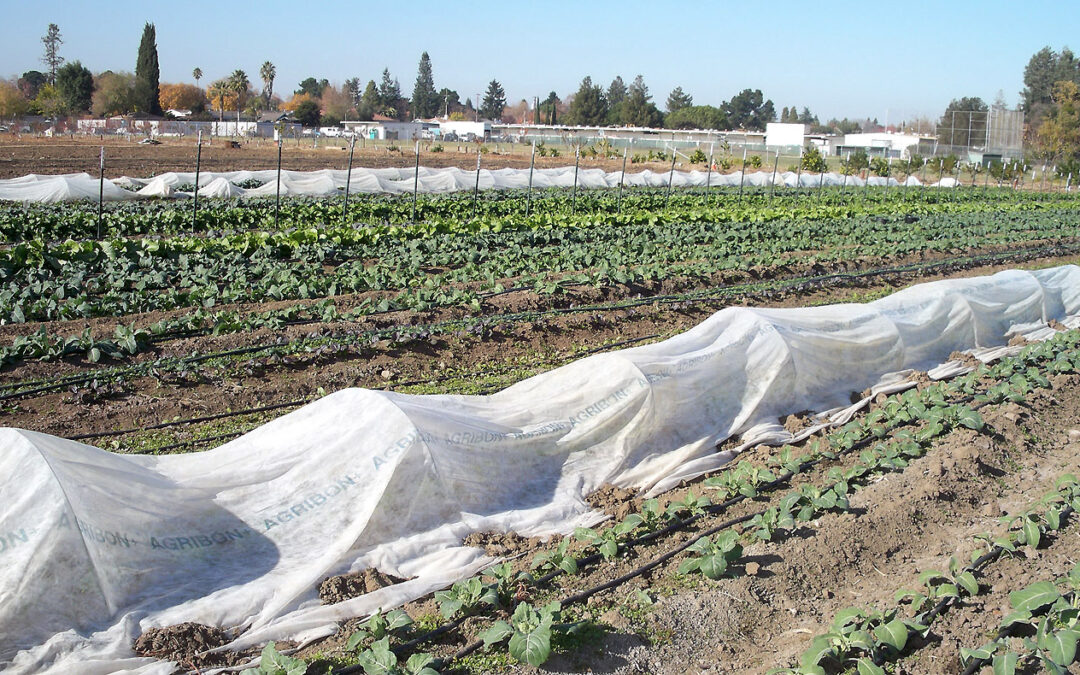
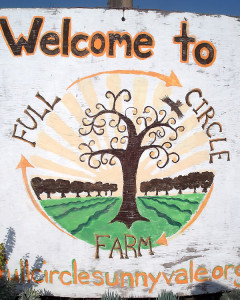
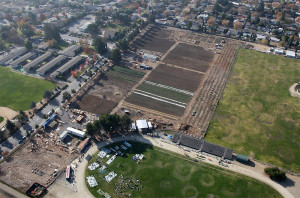
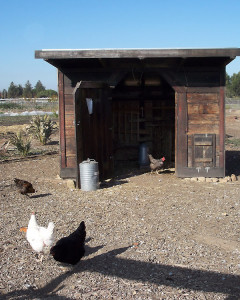

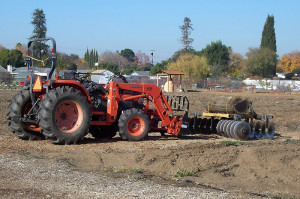

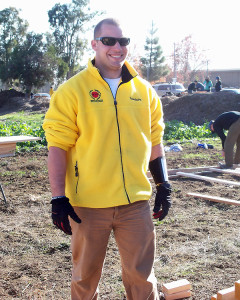



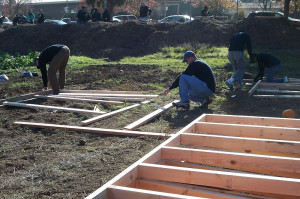


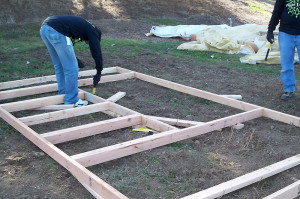

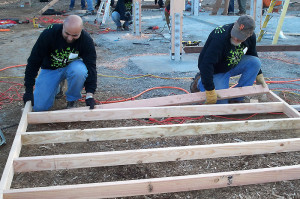
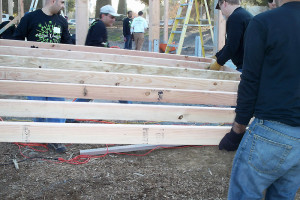
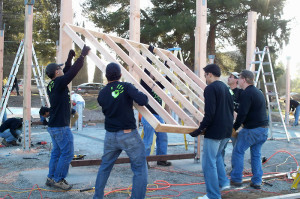

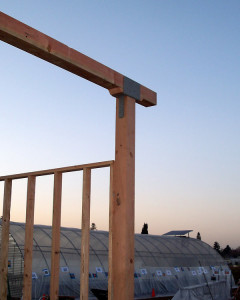








Well done, you two! What a nice project and one that you can go back and check on. In addition to buying veggies at the local farmer’s market, I vow to next year check labels for artificial flavors. A ’60 Miutes’ episode on ‘Flavor makers’ concocting 1000s of flavors to be added in place of real in convenience food scared the heck out of me recently. What a crock!
Here’s to fresher real food!
When you really start to scrutinize labels, it’s amazing how quickly you realize just how many synthetic, or non-pronounceable ingredients we consume in our diets. That’s the best thing about buying from Farmer’s Markets, the ingredients are all recognizable, and don’t require a label, as what you see is what you get 😉
Great post! I hope this is a great success, and that it changes lives. Good going!
I have a number of friends who don’t really know what to do with fresh ingredients. As many schools no longer offer home economics/cooking classes, it seems cooking skills have fallen by the wayside for many. It was a basic life skill taught in every school when I grew up. I’m excited that these students not only will know what vegetables really look like, outside of plastic bags and boxes, and will understand how they grow, but will also develop confidence in the kitchen using fresh produce. Something that will serve them well for a lifetime.
Clare, What a marvelous project and thank you and Mr Curbstone for sharing your time with the community and the story with us. gail
I love these Project Inspire events. Every one has been unique, and very worthy. It’s unfortunate it’s only once a year. I hope more corporations will follow NVIDIA’s lead, and put holiday party resources to better use within their own communities. Can you imagine what could be achieved?
What an inspiring project. I’m amazed how much you got done in such a short time. I’ve seen the farm, and I’m so glad they got a little shot in the arm.
I was a little frustrated those posts slowed us down, but we really did get a lot done for the first day. Next time we need to be sure our calendar is cleared if it’s a multi-day event. It’s a little disappointing not following this project through. I love what this farm is doing though, and it will be fun to see the results of everyone’s hard work when we go back for a visit 🙂
Great job! I look forward to seeing photos of the finished project. I am saddened by the epidemic of obesity in our country, the product of our lifestyle of instant gratification and convenience. Education is a start, but parents need to set good examples and provide healthy meals on a daily basis.
I agree, good nutrition starts at home, but when a pound of fresh fruit is twice the price of an entire fast food meal, I understand why families are forced to make the food choices they do. Fresh foods, and staple ingredient prices have skyrocketed in recent years. I actually get angry walking through grocery stores. $5 for a squishy loaf of bread is absurd. We make our own, but even wholesale flour prices are higher than they should be. Same with fruits, vegetables, diary products etc. There used to be an incentive for cooking at home, as raw ingredients were cheaper than eating out, or purchasing pre-processed foods. That’s no longer true in 21st Century America, and that’s what needs to change. There need to be more incentives for eating fresh, rather than processed foods. I truly believe that farms like Full Circle can make a genuine difference in their communities, and hope to see more like this in the future.
What a great project! It’s great that the food raised will go to the school cafeterias as well, as I know how strapped school districts are for money, and it’s so expensive to buy fresh vegetables. What a great place for education as well. That’s so nice you guys were able to help out!
I agree, speaking of leading by example. It’s encouraging to see some schools changing their menu plans, and steering away from becoming just another fast food restaurant. The middle school I went to in England gave the students their own community gardens, which they were responsible for taking care of. There were awards each year for the best gardens, and it’s probably at least part of why I still garden today. We grew vegetables and fruits, but nothing on this scale. With 11 acres enough food can be produced to really make a difference for the school district cafeterias, and the experience will be remembered by the students for a lifetime. Everybody wins.
BTW Do you use Google Reader? I sort my 120 into various folders. Works well. then toddle over to Blotanical to pick, tomorrow.
Very nice record of the day. I’m glad you used some of our pictures — thanks for the credit and links. It’s good to see the other photos too. I’m always struck by how many different ways there are to “see” an event.
Thanks Chris, I enjoyed looking through your galleries so we could catch up on the other projects of the day. I’m also grateful that you and Doug were there taking photographs, as I kept forgetting to pull my camera out and take pictures of our progress. I am glad I managed to capture the first wall going up though! 😉
Full Circle is such worthwhile project and it is wonderful that both of you worked on this together. Fresh food is expensive for young families and so important to have for good health. But the ability to participate in the education aspect is really where the value lies. Seeing, learning, doing, giving, benefiting.
Fresh foods are absurdly expensive. I wish we’d steer subsidies away from big-ag corn, and start subsidizing small organic farms that produce nutritious foods for the community instead. Our priorities seem to be askew when it comes to the nation’s health and well-being. Who knows, by educating today’s youth, hopefully we’ll encourage change tomorrow…
What a great way to spend the holidays! It must feel great to participate in an effort that will touch so many children’s lives. I often teach lower income students about nutrition through a JMG program and it is amazing how many kids only eat processed food. Sadly, providing fresh fruits and vegetables through the school is often the only way they get this needed nutrition. I wish home economics was taught still so that kids would learn how to cook and prepare fresh food. This project sounds like a great start in that direction!
That’s what I love about these Project Inspire events each year, the ability to make a difference for many people all at once. It’s so much more gratifying for me than trying to make just one person happy with a just-for-the-sake-of-it present under the tree.
The concept of the teaching kitchen was really exciting to me. Developing a little confidence in the kitchen goes a long way, as does learning to prepare foods that in season. Who knows, maybe a few aspiring future chefs will pass through those kitchen doors! 🙂
Considering how talented both of your are this was just the perfect project for you to give a little bit back to the community and be part of a great team at the same time.
We really enjoyed it. We enjoy building things here, and have a goat barn project to work on over the winter, so framing these walls was good practice! 😉
If everybody gave just a little of their time and know-how to make a difference the way you do, imagine what a different world we would live in! Thanks for sharing this special day with us and I hope it inspires a few more people to get up and DO something!
I hate how over-commercialized Christmas is, especially here. I wish everyone would buy less, and give more to their local community. It doesn’t have to cost anything but time 🙂
what a great project with so many benefits to the community. It looks like you accomplished quite a bit for just one day of work.
The day one crew did achieve a lot. What I didn’t show was the other buildings (sheds/storage), all the picnic tables and benches, the newly prepared beds. This event was huge, and I think made a tremendous difference at the farm.